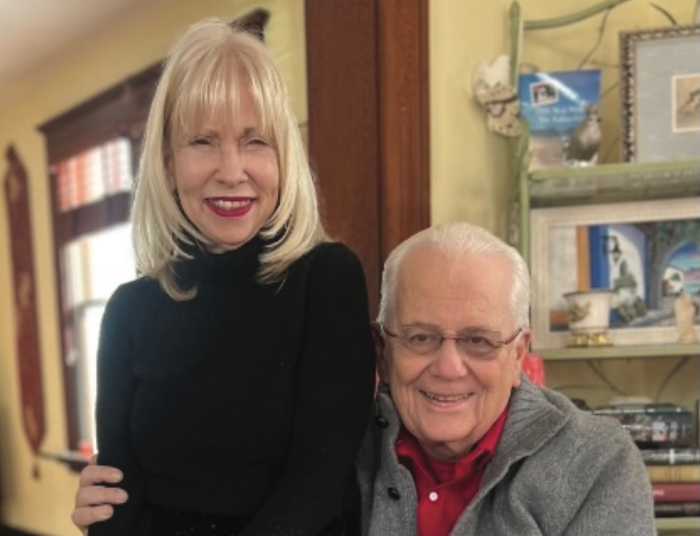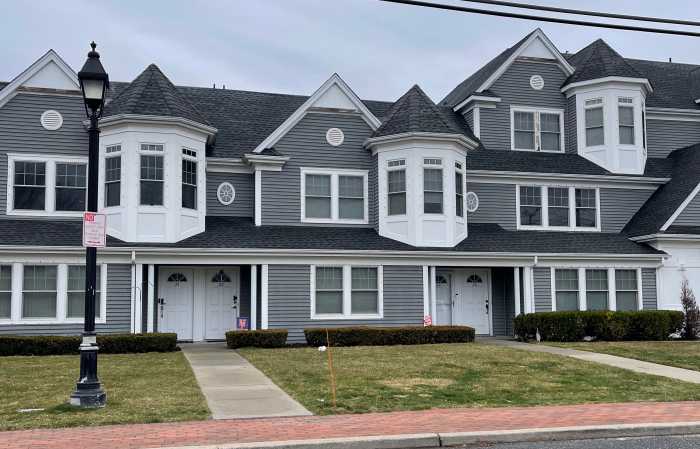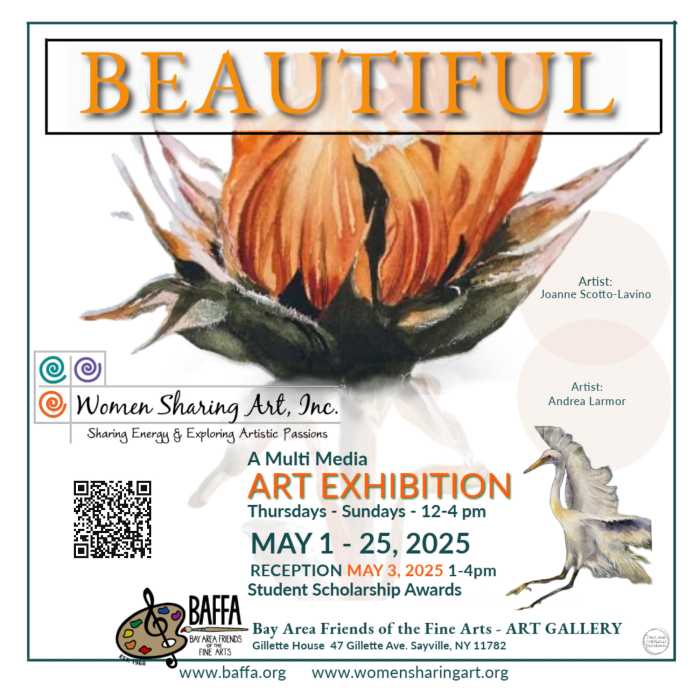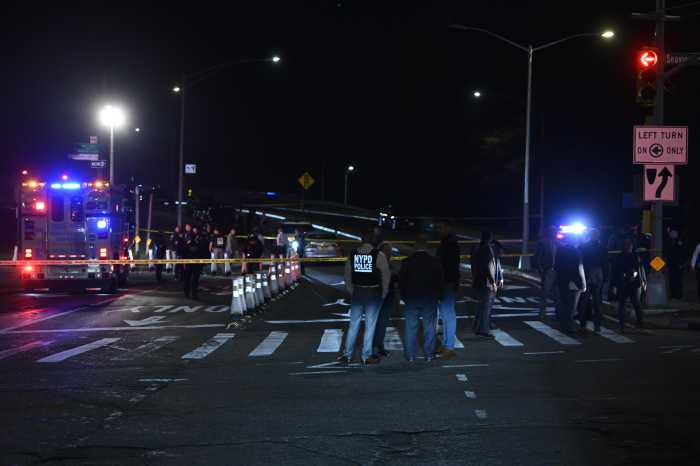The Arts Project of Cherry Grove celebrates its 75th anniversary this summer. It has presented annually live theater since its inaugural production, the “Cherry Grove Follies of 1948.” The Community House and Theater, a National Register site, is its home.
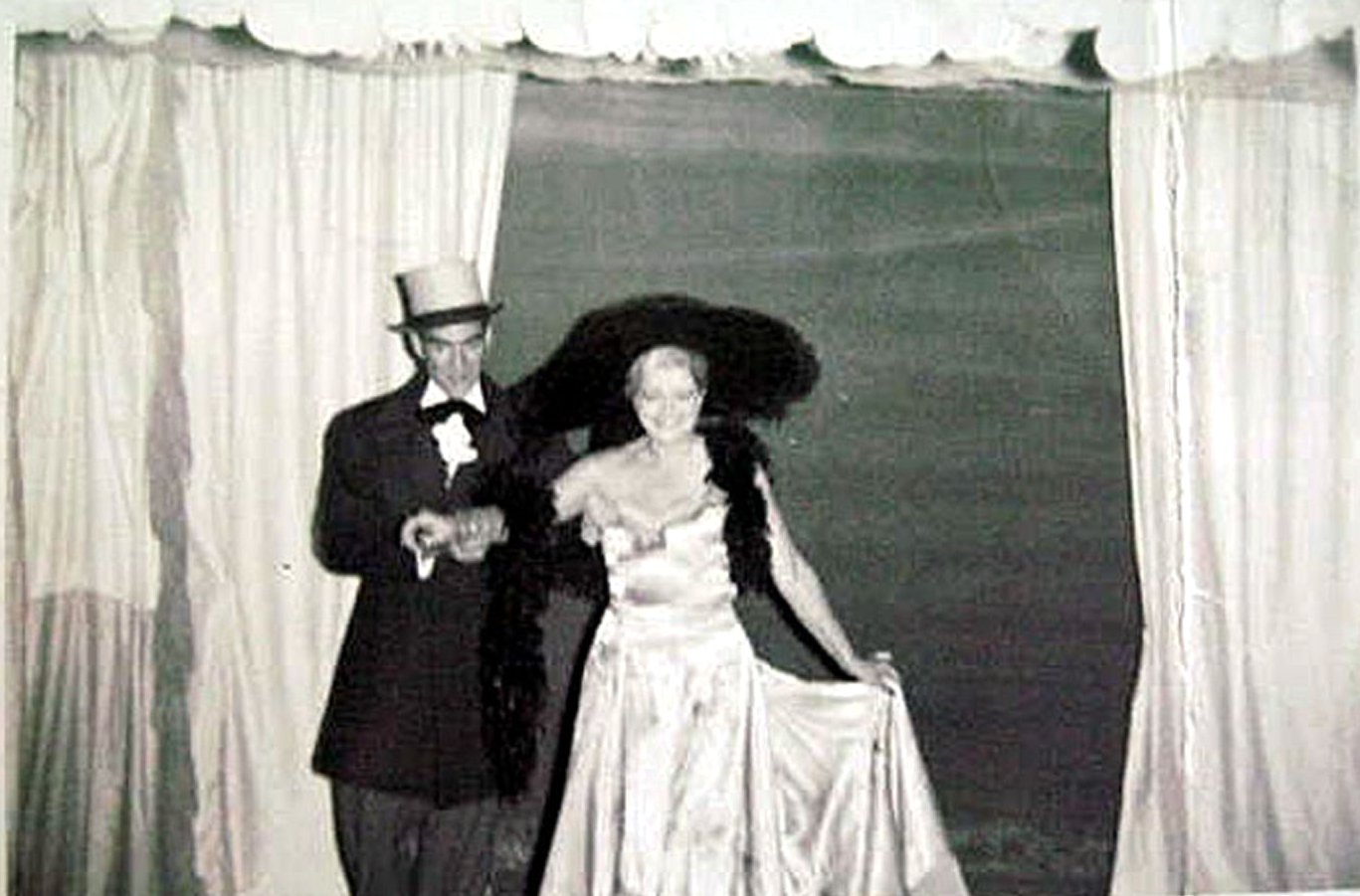
1948 Follies-Oh You Beautiful Doll (Guinness & Ruvell), Cherry Grove Archives Collection.
The Cherry Grove Property Owners Association established in 1944 an Art Project (sic) Committee “for the benefit and entertainment of the entire community to use and encourage the talents and interests of all property owners, their tenants, and their guests.” That committee evolved into the Arts Project of Cherry Grove.
The Art[s] Project’s first event was a County Fair and Costume Ball held at Duffy’s Cherry Grove Hotel in September 1945 and organized by Earl Blackwell of Celebrity Service fame. The event’s proceeds paid for two bayside lots, also a carriage house floated across the Great South Bay that year. The recycled building functioned as a town hall between 1946 and 1948 with no electricity and using donated furnishings.
Suffolk County News reported in 1948 that the Art Project’s co-chairs, Blackwell and Mrs. Howard (Helen) Ely, collected over $1,800 [$22,831 in 2023] for establishing an artistic and dramatics group and building an addition of a stage to the Community House. Blackwell launched the project with the “Cherry Grove Follies of 1948” on Sept. 25, 1948, a musical revue of about 40 minutes.
Duffy’s Hotel loaned a piano and a portable record player, also providing electricity via cable to the Community House. A clothesline curtain hung beneath the hay loft. Canvas tenting housed temporary dressing rooms on the outside decks.
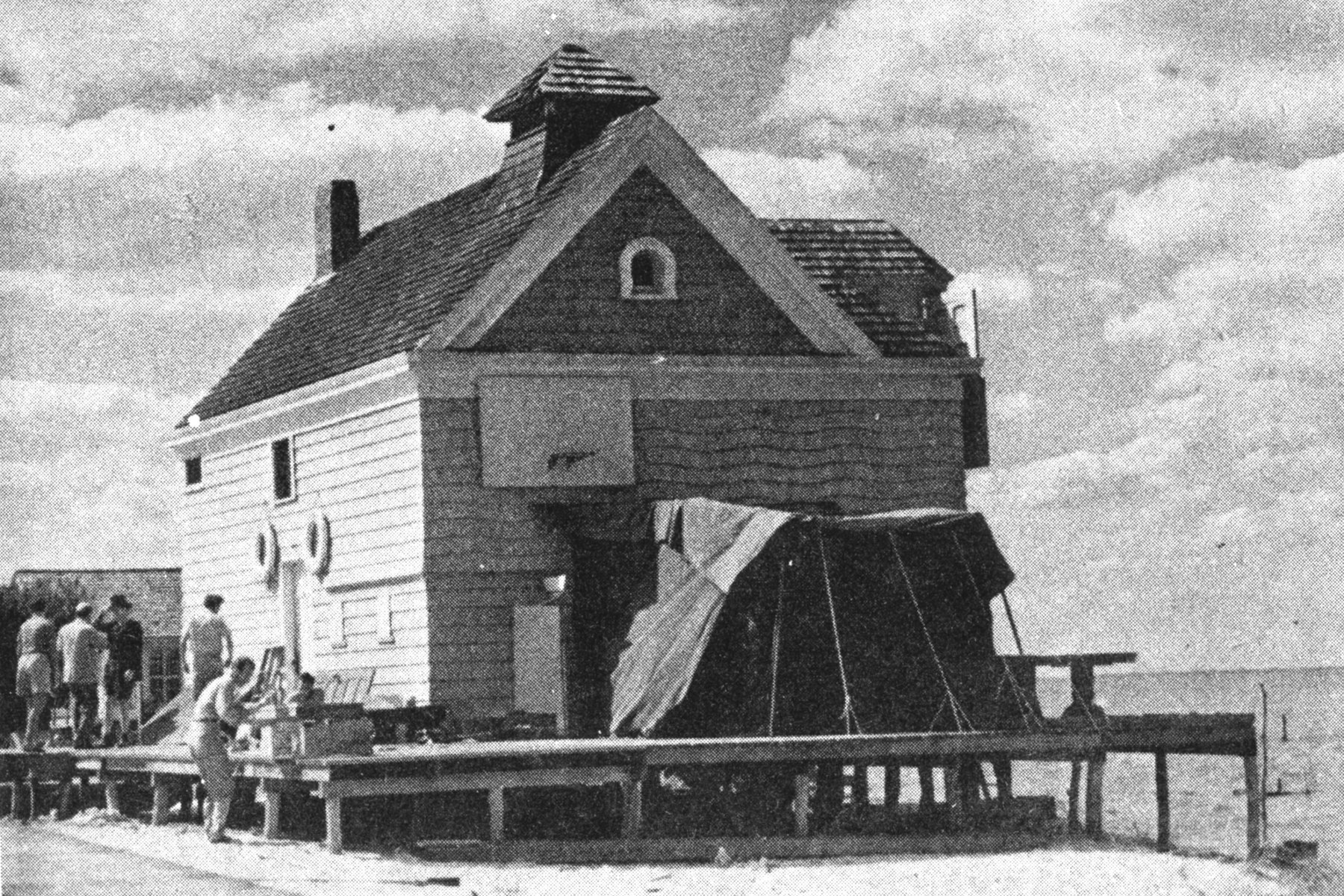
Stage props for the first show in 1948 at the now landmarked Community House Theatre.
The Follies production recalled Vaudeville traditions with songs, “By the Beautiful Sea” and “Oh, You Beautiful Doll,” sung by actors in period costumes. Entr’actes included comic sketches such as “Alice in Cherry Grove.” Yes, Alice meets some unique characters!
Cherry Grove was known locally and internationally to be a ‘safe haven’ beach resort for gay men and lesbians due to its relative privacy and isolation in 1948. The Arts Project’s first resident company was a mix of ‘in the know’ heterosexual and same-sex attracted performers and personalities from Broadway, Hollywood and radio.
The Follies’ advisors from America’s commercial theatre were full-fledged homeowners, renters, and visitors in Cherry Grove. Frank Carrington was a founder of NYC’s Cherry Lane Theater and New Jersey’s Paper Mill Playhouse. Cheryl Crawford was a producer of “Brigadoon,” and “Porgy and Bess.” Carson McCullers authored “The Member of the Wedding.”
Follies’ Broadway luminaries included “By Jupiter’s” (1942) Bertha Belmore backed by a chorus line of tuxedoed women. 1920’s Ziegfeld star Peggy Fears appeared in “Ziegfeld Girl.” Meg Murray was a corps de ballet dancer in “Dream with Music” (1944). Broadway comedian Nancy Walker from “On the Town” (1944) also appeared.
Hollywood film actress Betty Garde (“Northside 777” (1948) with Jimmy Stewart) appeared in the sketch “Primrose Path.”
Leonard Gershe (singing “By the Beautiful Sea”) later wrote the lyrics to “I Was Born in a Trunk” for Judy Garland’s “A Star Is Born,” and later the play “Butterflies Are Free.”
Kay Guinness appeared in “The Girl in the Song” serenaded by NBC radio’s Norman Ruvell.
Talented residents were given solos and provided conventional and at times cross-dressed chorus lines. Three back-to-back performances raised $666 [$8,477.30 in 2023].
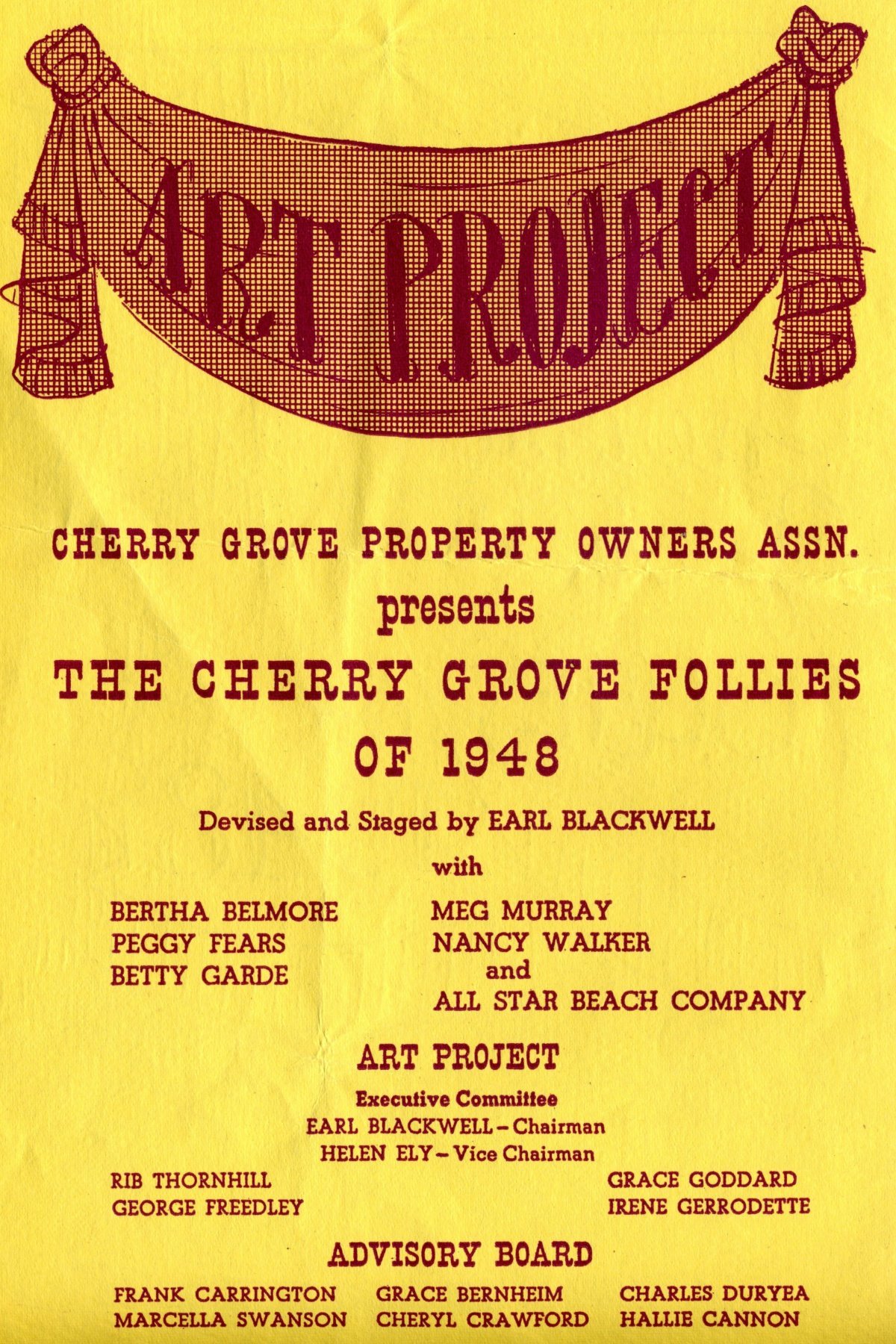
Cover to the Cherry Grove Follies program of 1948.
Surprising as it seems, Sayville families were enthusiastic audiences or theater company members. Sayville was an early regional theater enclave. In 1877, Margaret Fitzgerald ran a boarding house for theater folks on Handsome Avenue called the Comedy Castle. The Brooklyn Daily Eagle dubbed Sayville an “Artists’ Colony” when it announced Sayville Opera House’s 1901 summer schedule. Sayville’s Munkelwitz, Beebe, Case, and Jedlicka family members (1940’s residents of Cherry Grove) appeared in “The Taming of the Shrew” at the Opera House.
Most surprising was journalist Dorothy Kilgallen promoting the APCG’s Roaring 20’s Party theater fundraiser in her nationally syndicated Voice of Broadway gossip column.
The 1948-49 newly-constructed theater addition to the Community House – today’s gambrel-roofed structure – housed the stage and hemp-rope fly system for lights and scenery, a basement dressing room and an orchestra pit. An expanded auditorium, a lighting booth, and balcony seating greeted audiences in 1949. All were designed by Frederick Stover, a professional Broadway set and lighting designer, and occasional assistant to famed Broadway set designer Donald Oenslager.
In that bygone era, most gay men and lesbians (known to then Grove heterosexual natives as “the boys” and “the girls”) led double lives, closeted lives, despite seasonal freedoms enjoyed at Cherry Grove. The Arts Project’s “Cherry Grove Follies of 1948” was “a production that implicitly or explicitly acknowledge[d] that there are homosexuals on both sides of the footlights.” [1] It is the only continually operating “gay theater” in the United States.
Happy Anniversary to the Arts Project of Cherry Grove!
[1]
[1] William M. Hoffman, ed., “Gay Plays: The First Collection” (New York: Avon Books, 1979), pp ix-x.
Other Sources: CGPOA Minutes, Newspapers.com, NYS Historic Newspapers.org, IBDB.com, and IMBD.com.
Images courtesy of the Cherry Grove Archives Collection.



